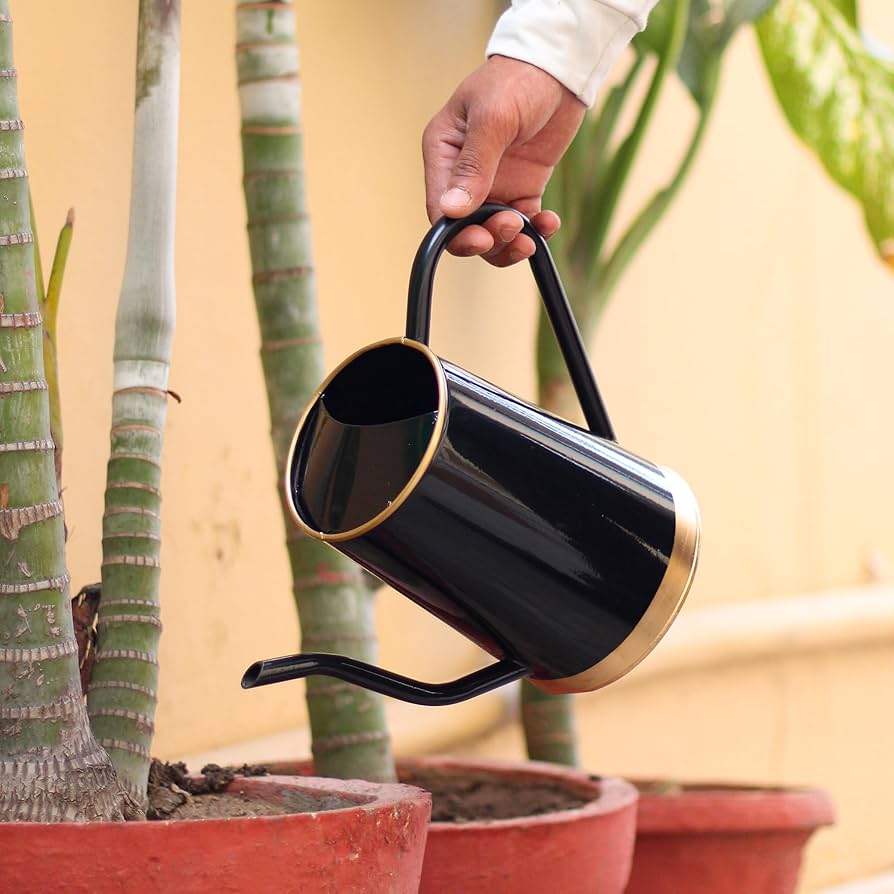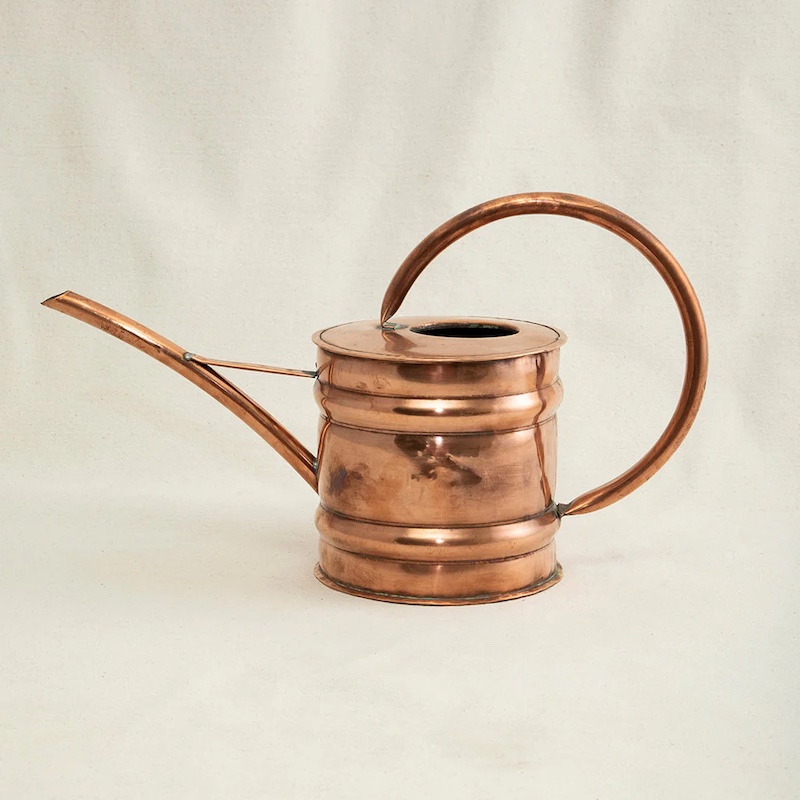
A Rewarding Hobby: Antique Watering Can Collectors Guide
Introduction to Collecting Antique Watering Cans
Collecting the antique watering can can be a rewarding hobby. It combines history, art, and gardening in a unique blend. If you’re new to this niche, it’s useful to understand its attraction. Antique watering cans are more than just old gardening tools. They are a window into the past and showcase craftsmanship from bygone eras.
New collectors should start by learning the basics. Know the different materials and designs that mark an item as an antique watering can. Some are made from metals like copper or galvanized iron. Others might feature intricate patterns or special markings.
It’s also crucial to be aware of the condition. Look for signs of wear and authenticity. This might include patinas, maker’s marks, or historical insignia. Remember, the condition can greatly affect the value of the watering can.
Connect with other enthusiasts to learn from their experiences. Join online forums, attend auctions, or visit flea markets. These are great places to gather valuable insights. Here, you can see a variety of antique watering cans up close.
Lastly, be patient and don’t rush your purchases. It’s better to build a small collection of valuable pieces than to have many of lesser quality. Enjoy the journey of finding each unique piece and adding it to your collection. Start exploring the world of antique watering cans and their rich history!
The History of Watering Cans and Their Evolution
The story of the watering can begins centuries ago. Early designs were simple and practical. They used materials easily found in nature like animal skins or hollowed-out gourds. As societies advanced, so did the tools they used. Metalworking skills brought us the first metal watering cans. They were durable and could last a lifetime. By the 17th century, watering cans were common in gardens across Europe. They often had a single handle and a spout. This design allowed gardeners to control the flow of water better.
The 19th century saw a boom in horticulture. Watering cans evolved to meet the needs of more serious gardeners. They began to feature a rose—a perforated nozzle. This created a gentle shower for delicate plants. Industrialization also played a role. It allowed for mass production of watering cans. Suddenly, they were not just for the wealthy. Everyone could own one. This era also introduced new shapes and decorative elements. Some watering cans from this period are now sought-after antiques.
Twentieth-century watering cans advanced with technology. Rust-resistant metals and new alloys emerged. These materials extended the lifespan and utility of the cans. The design became more refined too. Handles and spouts offered greater comfort and efficiency. Today, antique watering cans are a testament to these advances. Collectors appreciate both their form and function. They stand as a symbol of gardening’s rich history.
Identifying Antique Watering Cans: Materials and Markings
To start identifying antique watering cans, pay attention to materials and markings. Expert collectors know these can reveal a lot about a can’s age and origin.
First, examine the material. Antique watering cans come in various metals. Common ones include copper, brass, and galvanized iron. Their weight, color, and texture can signal their time period. For instance, heavy copper cans often hail from the 18th or 19th century.
Next, look for maker’s marks. These are signatures or symbols from the manufacturer and can be quite distinct. They sit on the bottom or side of the can. Authentic marks add to a can’s historical value.
You should also check for any unique features. This includes hand-crafted designs or special finishes such as a patina. A patina is a green or brown film on the surface of bronze or similar metals, produced by oxidation over time. It indicates the can has aged naturally and wasn’t recently made to look old.
Lastly, inspect for signs of original construction versus modern repairs. The method of joining pieces, like soldering, can tell you if the can is genuinely antique or if parts have been replaced. Look closely at seams and edges for signs of wear consistent with the can’s age.
Remember, identifying antique watering cans can be complex. Always gather as much information as possible. Cross-reference your findings with reputable guides and consult other enthusiasts when in doubt.
The Various Styles and Designs of Antique Watering Cans
Antique watering cans come in many styles and designs. Collectors often seek out pieces with unique shapes or features. Let’s explore some common types you might encounter.
- Long Spout Watering Cans: These have a slender spout that makes watering easy. They are great for reaching plants without causing damage.
- Round or Oval Bodies: Many antique cans showcase a round or oval body. This shape is classic and often associated with older models.
- Decorative Elements: Some cans feature ornate designs or embossed patterns. Details may include floral motifs or geometrical shapes.
- Rose Watering Cans: Equipped with a rose, or a perforated nozzle, these provide a gentle shower for plants. They became popular in the 19th century.
- Animal-Shaped Watering Cans: These whimsical cans take the form of animals. They add a playful touch to any collection.
- Wall-Mounted Watering Cans: Functional and decorative, these were hung on walls when not in use.
- Miniature Watering Cans: Small cans were not just for children. They also served to water indoor plants or as decorative pieces.
- Painted Watering Cans: Some antique cans boast painted surfaces. They can tell stories through their artwork.
Remember, the style and design help tell the age and origin story of an antique watering can. Look at the overall shape, handle design, and spout’s form. A diverse collection showcases a range of designs and the evolution of these charming relics.
Where to Find Antique Watering Cans: Tips and Tricks
Finding antique watering cans can be a delightful treasure hunt. Here are some tips and tricks to help you locate these historical pieces:
- Visit Local Antique Shops: Start close to home. Local antique shops often have a variety of watering cans. Inspect each one carefully for age and condition.
- Check Out Estate Sales: Estate sales can be gold mines for antique finds. They sometimes offer rare pieces at reasonable prices.
- Attend Garden and Antique Fairs: These fairs often feature vendors who specialize in garden antiques. They are a great place to find unique watering cans.
- Explore Online Auctions: Websites like eBay have a wide selection. Be sure to read the product descriptions and view all photos.
- Connect with Collectors Groups: Join forums or social media groups. Fellow collectors can offer advice and may even have cans for sale.
- Visit Flea Markets: Flea markets are known for unexpected treasures. Arrive early for the best selection.
- Check out Online Marketplaces: Websites like Etsy can connect you with sellers of antique goods from around the world. Always check seller reviews and ratings.
- Use Keyword Searches: When searching online, use keywords like ‘antique watering can’ to narrow your search.
Remember, when searching for antique watering cans, patience and persistence are key. With these tips, you’re well on your way to adding beautiful and historic pieces to your collection.
How to Determine the Value of Antique Watering Cans
Determining the value of an antique watering can involves several factors. Here is a simple guide to help you assess its worth:
- Check the Age: Older cans generally hold more value. Look for dating clues in their materials, design, and markings.
- Assess the Condition: Value increases for cans in good shape. Minor wear is acceptable but avoid cans with major damage.
- Note Rarity: Unique or scarce designs can be more expensive. Single-handle designs and hand-crafted details often indicate a rare piece.
- Research Maker’s Marks: Identify the manufacturer. Can with clear, recognizable marks may be more valuable.
- Consult Price Guides: Use guides or auction results to compare prices. These can indicate current market trends for various types of antique watering cans.
- Survey Demand: High demand can drive up prices. Check interest in similar cans among collectors and at antique shops.
- Examine Restorations: Original cans are usually worth more. Those with modern repairs or parts might be less valuable.
- Authenticity is Key: Ensure the watering can is authentic. Replicas or fakes are worth significantly less than real antiques.
Remember, while common watering cans might be moderately priced, rare and well-preserved examples could be considerably valuable. Take your time to research and understand what you have. Connect with experts if needed for a more accurate valuation.
Caring for and Preserving Your Antique Watering Can Collection
Caring for antique watering cans is key to maintaining their value and charm. Here are steps to follow for proper care and preservation:
- Handle with Care: Always use a gentle touch. Avoid rough handling that can dent or scratch the metal.
- Clean with Caution: Use a soft cloth to wipe away dust. For tougher dirt, use mild soap and water. Dry immediately to prevent rust.
- Avoid Harsh Chemicals: Never use abrasive cleaners. They can harm the can’s patina and reduce its value.
- Display Wisely: Keep cans out of direct sunlight. This prevents paint from fading. Also, avoid damp areas to stop rust or corrosion.
- Repair with Respect: If repair is needed, find an expert. It’s important to retain the can’s original features as much as possible.
- Regular Inspections: Check your cans often for any signs of damage. Early detection can prevent serious issues.
- Control the Environment: Maintain a stable climate. Extreme temperatures and humidity can damage antique metals.
- Document Your Collection: Keep records of each piece. Include photos, descriptions, and condition reports.
By following these tips, your antique watering cans can last for many more years. This will keep your collection both beautiful and valuable. Remember, every can tells a story. Preserve that story with care and attention.
Highlighting Unique and Rare Antique Watering Can Finds
Every collector dreams of stumbling upon that one unique or rare find. Antique watering cans are no exception. They often hide gems waiting to be discovered. Pay attention to the distinctive features that set them apart. Here are some key points to consider.
- Look for Uncommon Shapes: Unique forms can be quite valuable. They range from abstract figures to designs inspired by nature.
- Search for Signature Designs: Certain makers crafted signature styles. These can command higher prices due to their distinctiveness.
- Find Cans with Provenance: A watering can with a known history can be a real treasure. This might include items from famous gardens or ones owned by historical figures.
- Check for Limited Editions: Occasionally, manufacturers released limited runs. These often have serial numbers or special markings.
- Seek Out Decorative Features: Extra details like hand-painted designs or embossed images can signal a rare find.
- The Story Matters: Sometimes, it’s the story behind the can that drives its rarity. Cans with a documented past spark the imagination and the wallet.
- Regional Designs: Certain regions had specific styles or production techniques. These can be rare outside their area of origin.
- Condition Counts: Even rare cans need to be in good condition. Find ones that have been well-preserved for the best value.
Remember to use patience and do your homework. With some luck and diligent searching, you may add a singular and enchanting piece to your collection.

